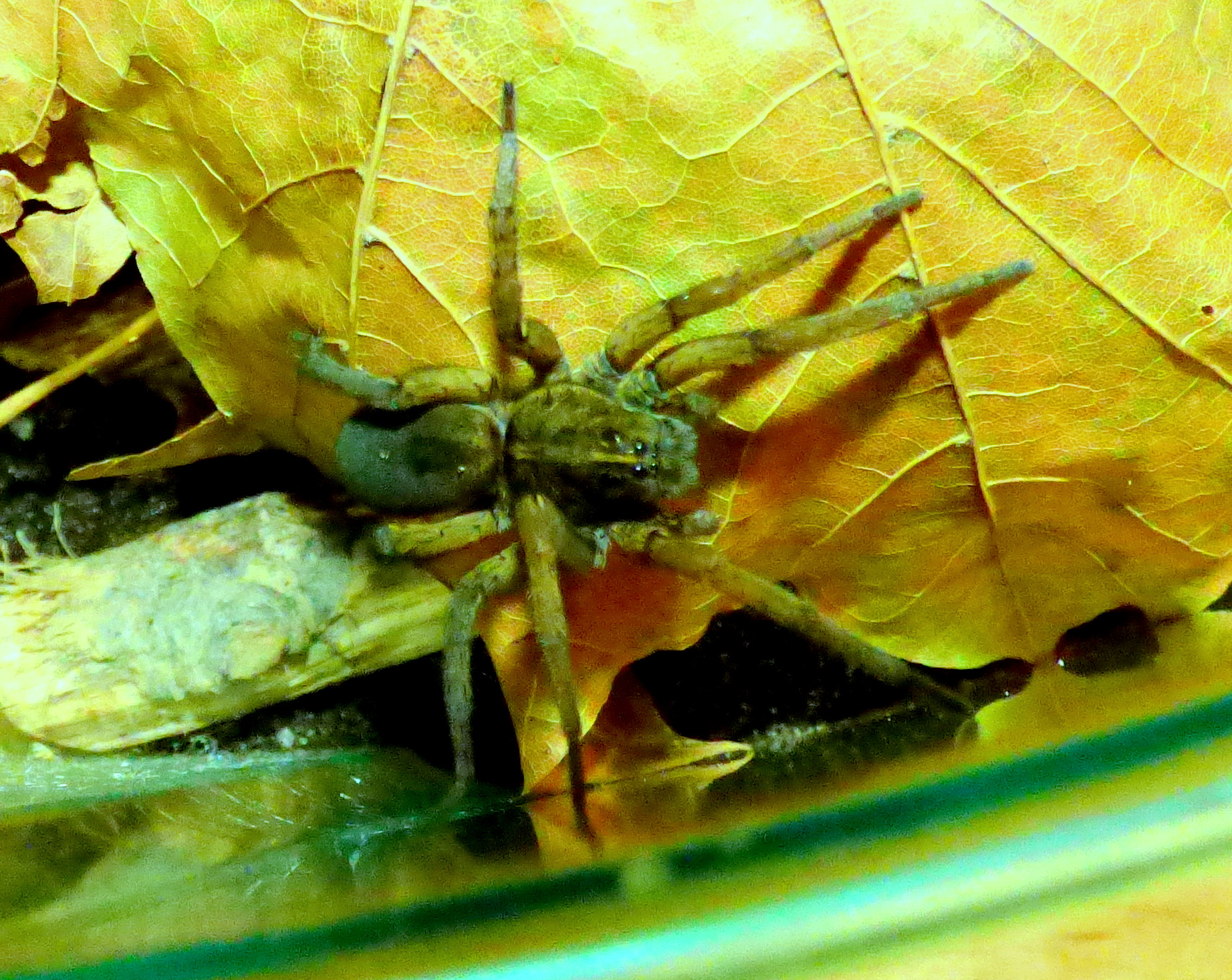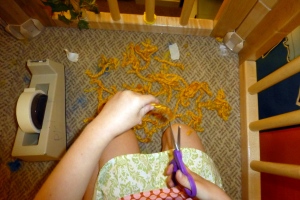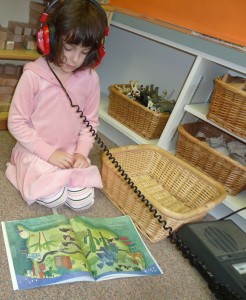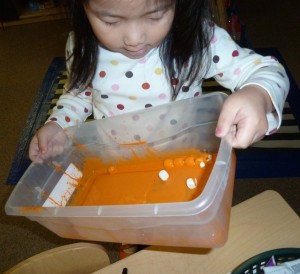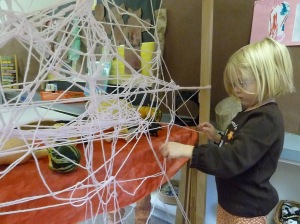A little while ago, we realized we had a visitor in our class. This little friend was attempting to pick out a lovey (we think?) Being kind hosts, we created a special place in our classroom for our visitor to hang out safely. 
We learned that our new friend needed special food. Hamburgers were just not going to cut it. We also found out that it required hiding spots to feel safe and a small capful of water to drink.
Many names were considered including Buggie, Boogie and Spiderman. After a class vote, “Ellie” became the official name of our new friend. (Although many still call her “Buggie.” I’m including a picture at the bottom of this post, but I should warn you, if you are not a fan of spiders…..close this window now.
Ellie inspired us to find out what type of spider she might be. At first, we thought she was a Grass Spider. Then we realized that her abdomen is not the right shape. We’ve also observed that she is not making webs. Our current thought is that she is a wolf spider. If you have a different idea, let us know in the comments. We can always take ideas from “the experts.”
A few times each week, we go foraging for food for her. We’ve put in ants, mites, pill bugs (isopods) and unidentified teeny tiny bugs. Soon, we will need to let her free to roam before the cold weather hits.
An now……meet Ellie:
